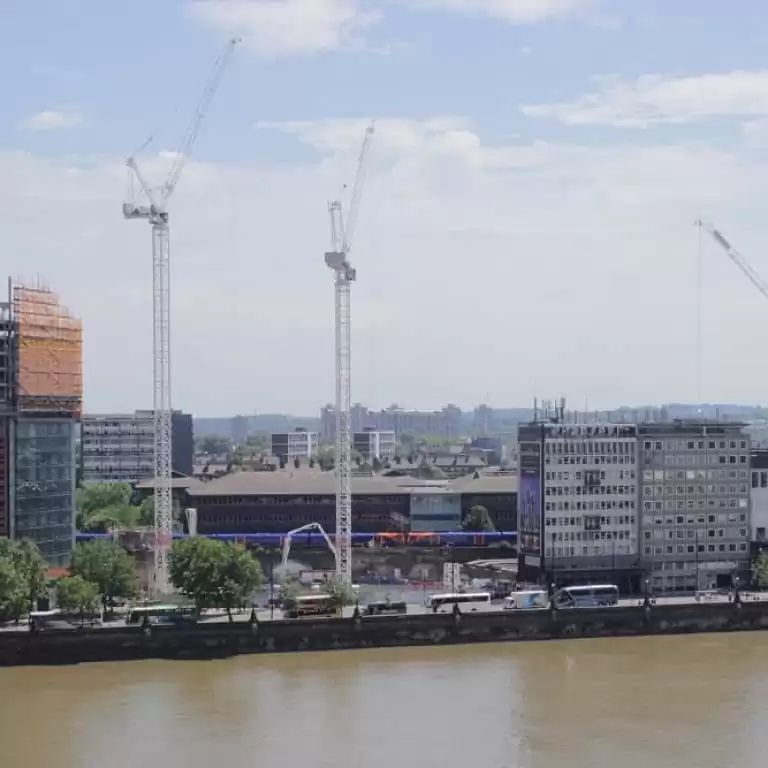
News Time-lapse applications in other mediums
As technology has developed, time-lapse has been used widely in the medium of film, both as a visual trope and as its subject.
Koyaanisqatsi (1982) by Godfrey Reggio
The first feature length film to incorporate time-lapse techniques was Godfrey Reggio’s Koyaanisqatsi (1982). Created between 1975 and 1982, the film consists mainly of slow motion and time-lapse footage featuring cities and natural landscapes across the United States.
Taking its name from the language spoken by the Hopi people, a Native American tribe in north-eastern Arizona, the word is roughly translated as ‘life out of balance’. Other meanings include ‘life in turmoil’, ‘crazy life’, and ‘a state of life that calls for another way of living’.
A non-narrative film, Koyaanisqatsi depicts an apocalyptic vision of the collision between two worlds – urban life & technology vs. the environment.
The first film in Reggio’s Qatsi trilogy, the series aims to show different aspects of the relationship between humans, nature, and technology. As Reggio himself notes, “there seems to be no ability to see beyond, to see that we have encased ourselves in an artificial environment that has remarkably replaced the original, nature itself.
“We do not live with nature any longer, we live above it, off of it as it were. Nature has become the resource to keep this artificial or new nature alive.”
Koyaanisqatsi juxtaposes images and music in the form of a tone poem – a continuous orchestral score which is meant to illustrate and evoke the content of a poem, story, novel, painting, landscape, or other source.
To this end the film contains no dialogue and features time-lapse footage of clouds, crowds, and cities, filmed by cinematographer Ron Fricke accompanied by a musical score by Philip Glass.
Koyaanisqatsi explores timely themes, for sure, but Reggio also expects the meaning of the film to be left in the eye of the beholder: “Art has no intrinsic meaning. This is its power, its mystery, and hence, its attraction. Art is free. It stimulates the viewer to insert their own meaning, their own value.
“The film’s role is to provoke, to raise questions that only the audience can answer. This is the highest value of any work of art, not predetermined meaning, but meaning gleaned from the experience of the encounter.”
A trailer is available to watch on YouTube.
Tom Lowe’s TimeScapes in 4K
This impressive video is the result of a two-year journey roaming the Southwest of America in his Toyota pickup truck. Lowe secured funding for the film following an encounter with New Zealand composer and entrepreneur Nigel Stanford, who also provided Lowe with a 4K Red MX digital cinematic camera. The film also received sponsorship and equipment from Canon USA.
TimeScapes was shot in 5K resolution on Red Epic and Canon DSLR cameras, and edited in 4K in Adobe Premiere and After Effects. It was graded by colorist Ian Vertovec whose credentials include work on David Fincher films The Social Network (2010) and The Girl with the Dragon Tattoo (2011).
Production for this impressive work was not easy and involved Rowe sleeping under the stars for 250 nights while his camera continuously captured time-lapse. His hard work paid off as he was named Astronomy Photographer of the year in 2011 for his image featuring a 4,000 year-old bristlecone pine tree set against the Milky Way galaxy.
Owl City’s music video for ‘Good Time’ (2012)
As well as film and television, another medium where the use of time-lapse is beginning to flourish in the 21st century is for music videos.
While time-lapse can be seamlessly incorporated alongside still images and video within a particular sequence, time-lapse in isolation can prove to be just as effective.
The song ‘Good Time’ is the lead single featuring Carly Rae Jepsen on the album The Midsummer Station (2012) by American electronica project Owl City.
Very simply, in fitting with the title of the song, the video depicts an entire day at the beach.
Although not the official music video released along with the single, the video accompanies the official audio track on Owl City’s YouTube Vevo channel.
Filmed at Santa Monica’s picturesque State Beach, the time-lapse video captures crowds of people as they come and go to enjoy the sun, sea, and sand. The track was described as a ‘summer anthem’ of 2012 by many critics, which is further evoked in this video.
Remaining in the same fixed position, the composition is understated, but appropriately so, given that it shows people having a ‘good time.’
The filter applied to the footage also gives a retro feel to the narrative, perhaps helping to evoke a sense of nostalgia and youth, which corresponds with the broader theme of the album and its marketing material.
As is evident from this small handful of examples, how time-lapse has been applied in film, television, and music, has developed into a trope within these different mediums.
In isolation or in combination with other technical elements, time-lapse is now a very significant part of professional visual production.